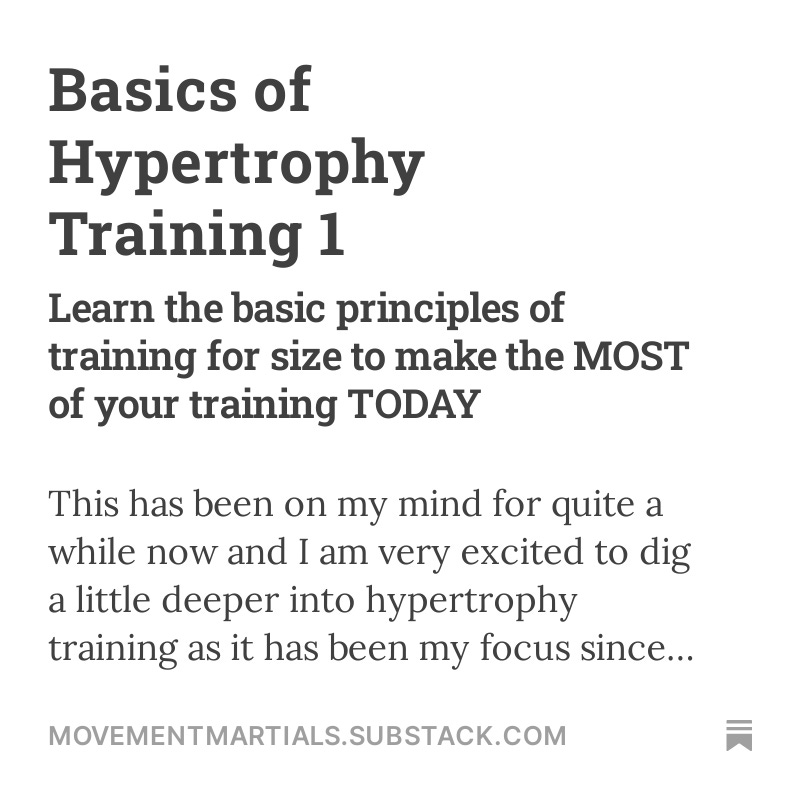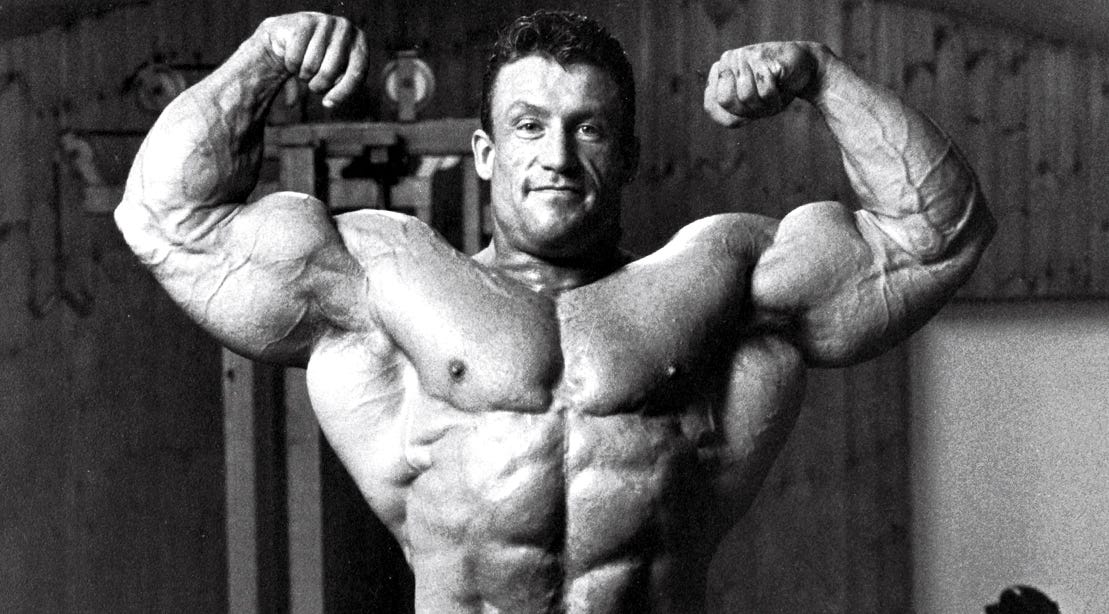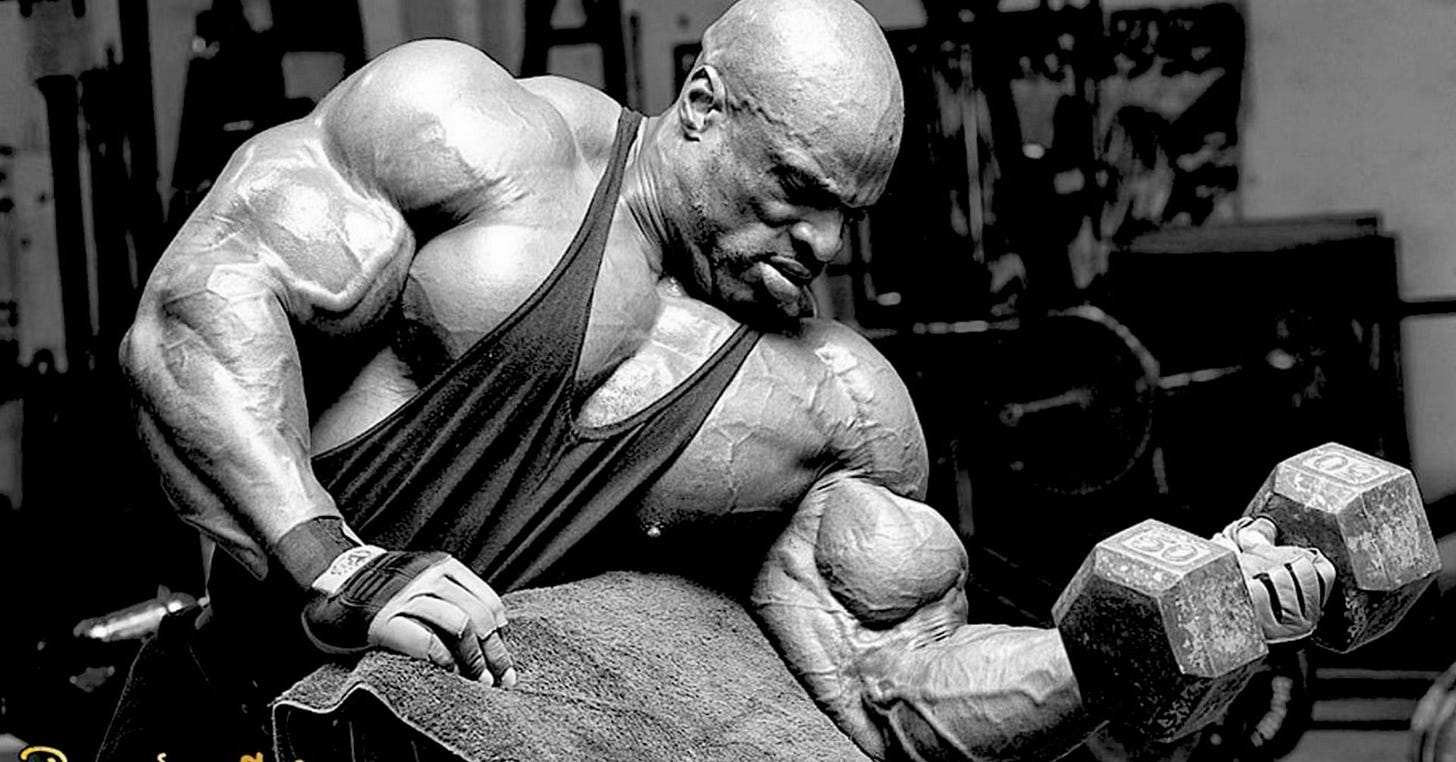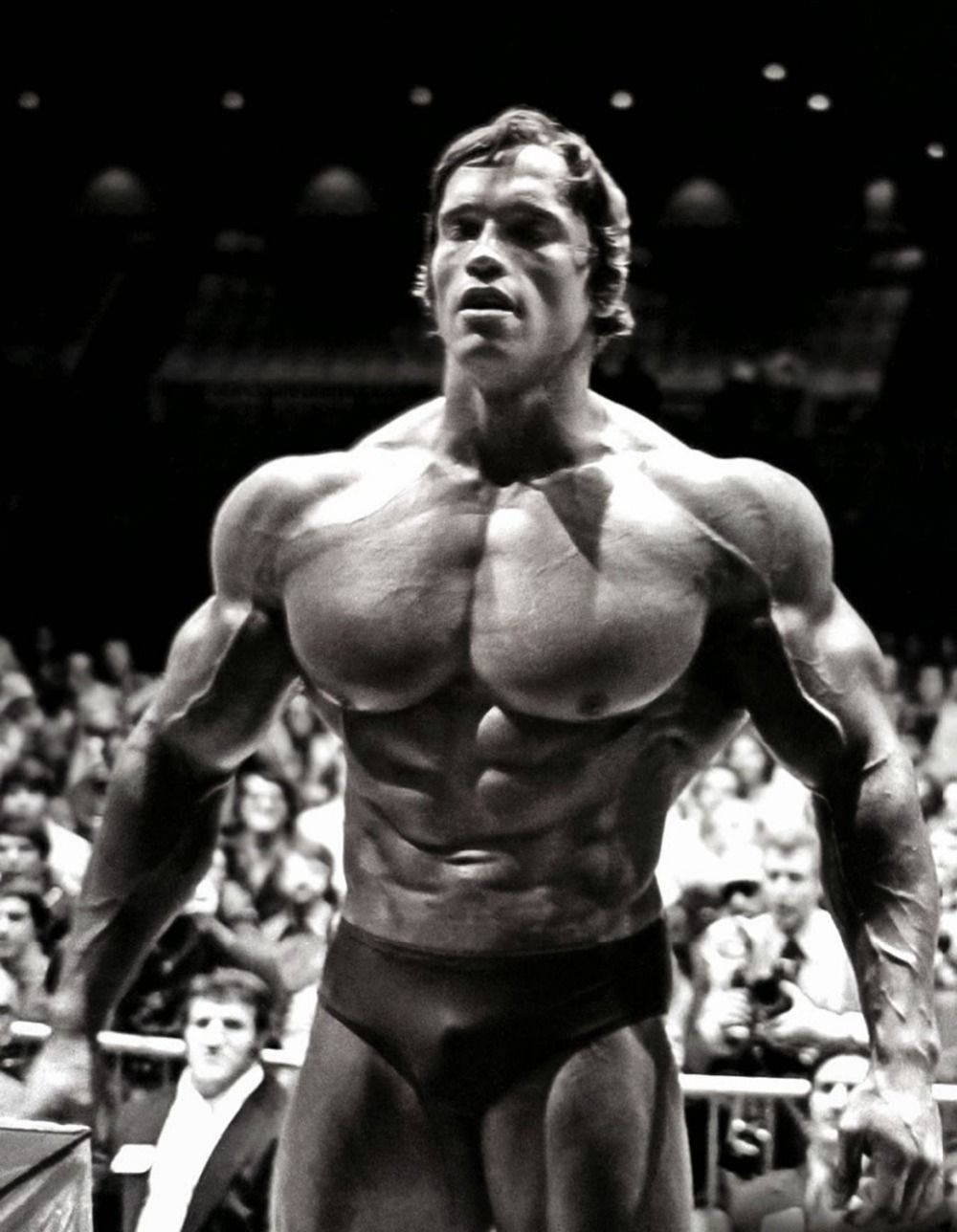Basics of Hypertrophy Training II
Learning to build the perfect hypertrophy program for YOU: A continuation of hypertrophy principles to get the most out of your training.
I was always a scrawny 120lb kid and wish I had easier access to knowledge from someone who lived the journey.
My intention with this series is to help beginners build an understanding of hypertrophy training and reinforce knowledge for others 100% FREE. I aim for it to be digestible, quick and easy to understand so PLEASE ask questions and I will clarify.
Enjoy!
In the last section of this series I covered some terms and basic principles of training to build SIZE.
In summary we covered the following:
Maintenance Volume (MV), Minimum Effective Volume (MEV), Maximum Recoverable Volume (MRV), Maximum Adaptive Volume (MAV) AND reasons why you should place heavy emphasis on eccentric loading/control, pauses in stretched positions, and exercises that train lengthen positions.
To learn more about these terms and principles AND get some bonus tips you can apply to your training today, check out the first article in this series! Click the article above!
In this article we are going to cover exercise selection, exercise variation, training frequency and choosing set and rep ranges. HERE WE GO!
EXERCISE SELECTION
SO often I see fitness gurus preach and teach OPTIMAL movements, where the line of push or pull is perfectly in line with the pennate of a specific muscle.
Although I do love the idea of nerding out, really getting into the nitty gritty of exercise science, biomechanics and looking for the best option, this need to find the perfect movement takes away from training.
Movements like this DO have their place and can even be beneficial, but context matters.
Don’t be blinded by perfection. In many cases these movements can’t be sufficiently loaded to cause significant stimulus. In other situations they require time consuming set up or specialty equipment. More times than not there is no evidence to show that one variation of a movement is better than another in terms of growth.
This is why the word optimal has lost its value to me in a lot of contexts, because what is optimal? Optimal for who? For what goals?
Who’s to say my skull crusher won’t grow my triceps compared to your cross body cable extension?
When it comes to movement selection I look for the following in no specific order:
Can you feel tension in the target muscle? If the target muscle is the one getting fatigued and is the limiting factor to that exercise— MONEY.
Are you getting insane pumps from just a few sets? Yes? Glorious.
Is it making you sore in the target muscle? Yes? Cash.
Is it painful to your joints? No? Great.
Is it mentally fatiguing? (set up time, loading time, mental prep and effort, think HEAVY deadlifts) No? Got it.
Can you progress/improve it week to week? Yes? Dope.
Are you enjoying it? Yes? This exercise is perfect for you!
Remember, no movement is inherently good or bad (except Triceps kickback- BAD). Each exercise is just one option of many, and when performed with good strict technique (reference Hypertrophy I) they can be equally effective.
Something I take into consideration is reference and constraints. I have a post on this called the constrains model so I won’t get into the weeds here, but reference is anything your body is in contact with and allows your body to be stable to in space (gives sensory feedback if you will). If you’re standing on a train and you don’t hold on to the railing you’re likely to tip. Hold the railing and BOOM— stability.
Constraints refer to anything that fixes the path of movement, like railroad tracks.
Machines are fixed, we can’t move them off the tracks which is great from a stimulus standpoint compared to free weight movements.
It’s pretty hard NOT to feel hack squats in your quads, BUT if you are squatting a very hingey low bar style squat you’ll probably feel more posterior chain.
I love the use of machines for this reason.
NOTE: THIS DOES NOT MEAN FREE WEIGHTS ARE BAD.
Read the line above one more time please :)
I really love free weight movements for hypertrophy and use them often for myself and clients. Use the implement that gives the best stimulus for YOU.
Free weights not cutting it? Try a machine. Machine hurting the joints? Try free weights.
Be adaptable.
VARIATION
“Now that I know how to pick the right set of exercises for my cycle of training, how many variations do I need? When do I need to change the variation I’m currently using? When do is the right time to shock the muscle?”
First, muscles can’t actually be shocked— I feel like people should know this but someone did ask, so this is me debunking the theory altogether.
You only need to change a variation of a movement when it stops checking off the boxes we used to pick the exercise in the first place! Pumps aren’t as wicked, you can’t feel as much tension, joints are getting beat up, etc.
Don’t fret, time away from your favorite movement may be just the thing to rekindle the flame and it can feel just as good as the first time!
That being said don’t be afraid to try new things— schedules change and training will never go as planned. It is okay to change things up from time to time. Example, I went on vacation for the new year and had to complete a week of training in a barn with no heat in 25 degree weather with only a squat rack and barbell… I got that shit DONE crazy pumps and all, but it was NOT how I had planned it out 4 weeks prior lol.
I recommend trying to stick to the plan as much as possible and deviate only when needed so that it helps build an understanding of the movement and if it is or isn’t causing growth.
This is the reason I keep my variations the same week to week.
In my chest training I have 3-4 variations I like to use. A flat variation, a flye, an incline variation. Typically one of the flat and incline variations will be a bench and the other will be a machine or a smith machine. If I add a forth variation for more volume, I will do another flye variation with a different implement than earlier in the week.
For instance, Monday is a cambered bar bench press and cable flye, Thursday could be incline machine press and a DB flye.
This variation stays consistent week to week, but offers some diversity throughout the week which offers slightly more gains than if I only did the same two exercises both days I hit chest.
I pick variations within a week of training that each have something slightly different to offer, so in the chest example I want to hit the largest portion of the pec (flat bench), sternoclavicular portion (incline bench) and the also get some horizontal adduction of the humerus (flyes).
For each muscle group I try to think of the muscle action and choose a variation or two that can get the job done!
On top of hitting different parts of the muscle, adding variety loads connective tissue differently and even though slight— effective for recovery.
Let’s say bench press hurts the shoulder, but it is the only movement you have built in for your pecs. Without variety you subject your body to at least 2 bench presses per week.
Instead, keep a few variations that rotate throughout the week. This will allow the shoulder to heal from the bench press specific stimulus before the next bench session!
Variation can be changes in grip, implement, rep scheme, tempo, pauses, you name it!
Don’t know where to start? Please ask! Always happy to help a fellow swoldier.
FREQUENCY
“How often should we hit a muscle to keep it GROWIN’???”
Well It depends… How quickly do you feel that the muscle is recovering? Are you sore going into your next session? Did you never even get sore?
Let’s take a dive.
Different muscle groups fatigue and recover at different rates. AND this also varies person to person.
If I hit chest and triceps in the same day, same number of sets per muscle group. My chest might be CHALKED for 2-3 days whereas my triceps only need 1 day of recovery to feel fresh.
Hence the issue with the bro split— hitting a muscle group once a week probably isn’t the best plan of attack.
If a muscle is fully recovered and ready to be OBLITERATED again, why wait an extra 3 days to train? Those are just gains being left on the table.
A better plan is to train a muscle when it’s recovered to milk the most out of the training cycle.
This presents a slight issue as large muscles TYPICALLY take longer to recover than smaller ones!
The best option is likely to train the group the recovers faster with more frequency throughout the week— this might mean ending a leg day with some triceps or biceps or both. Too easy.
This does take some experimenting because recovery times are completely unique to the individual.
My chest can usually take a beating, but my hamstrings… They can be sore for 5 days later in the block, as I train closer and closer to failure.
My favorite training partner can CRUSH hammies over and over again and fully recover in half the time. Such is life.
The principles are simple.
Train. Recover. Adapt. Repeat.
In that order— train too frequently and you can’t adapt. Too infrequently and you miss out on an opportunity to make more adaptations!
SET RANGES
I covered this the tiniest bit in ‘Basics of Hypertrophy I’ but a short refresher will serve well. As such I won’t get too deep but for reference to some terminology go check that article out.
Set ranges really depend on the stimulus you get from an exercise. You can actually use the bullet guide from the exercise selection portion and instead of yes or no make it a sliding scale of 1-4 to gauge a good number of sets to use for a specific muscle group.
Let me explain. One set of a seated leg curl and 2 sets of stiff legged deadlifts with 1 rep in the tank leaves me with a 4/4 pump, 4/4 workload in the target tissue and 1/4 joint pain. It also leaves me with soreness that I recover from just in time for my next leg day.
Do I really need more hamstring volume for that day? Will it benefit me? Probably not, it might actually hinder performance if I can’t recover in time for my next session.
Don’t go bananas on one specific muscle group so much so that you’re still beat up by your next session. Just food for thought! Play around and see what works for you!
REP RANGES
I will keep this section super simple with some general rules I like to follow.
The first rule is train close to failure.
Thinking 1-3 reps from failure, ramping the intensity closer to failure week to week and only training to failure at the end of a block.
I prefer training really close to failure but NOT to failure every session because it allows me to recover better between sessions thus extending my training blocks.
I recommend this approach for most, BUT it’s important to understand what training hard feels like.
If intensity is compromised and you stop sets before getting close to failure you won’t elicit the results you seek.
Be honest or train with a partner who will keep you honest.
Rep ranges themselves like most everything are dependent to the individual but generally if you’re working 5-30 reps, that’s within range for hypertrophy.
I understand that the range is HUGE so let me walk you how I structure my reps.
Please note that there are many other ways to structure reps!
5-10 Reps: I save this range for heavier compound movements like a barbell bench press, still with great control and pauses.
p.s. if your ass is off the bench, reduce the load— not much work is getting done for the pecs anyway! Get the most bang for your buck and use better technique!
Generally I keep these in lower rep ranges because it feels very familiar to powerlifting training.
8-15 Reps: This range I use for heavier compounds performed on machines.
Personally, I’m getting insane pumps pushing leg presses and chest supported rows in higher rep ranges and I think it’s because I have a fixed track and lots of feedback to destroy the target tissue.
DUB!
12-30 Reps: This is the range I use for isolation type movements like a flyes, curl, lateral raise, etc.
The range is HUGE here because if I do the same exercise twice in the same week, the first time I do it, I like to use heavier loads and hit lower end of the rep range.
By the second time I hit the exercise I can add reps, add longer reps, a longer pause or “squeeze” to help add variety to the stimulus making it like it’s own exercise!
Example— If I do a leg extension on Tuesday and Friday, Tuesdays session will be programmed at 120lbs for ~15 reps.
Fridays session will have 60lbs with a 3 second top hold for ~25 reps.
If you’re asking yourself “Isn’t this just variation we just talked about already?”
*YOU’D BE RIGHT* — It’s an excellent way to add variety with limited equipment!
Just an idea— remember variety throughout the week is great!
NOTE:
The actual number of reps you do is completely arbitrary as long as you’re in the range. 15 reps is no different than 16 or 14.
Don’t feel like you need to stop at a number that looks nice on a sheet— Don’t worry about hitting a specific number as it may hold you back from extra reps or push you past failure!
In the end rep scheme is MUCH easier to manipulate that weight within a set.
I hope this guide is useful and is something that can be referenced again and again.
Thank you for tuning in and get ready for the next installment of the Basics of Hypertrophy Training!
If this article was helpful for you please share it someone who you think would benefit! Believe me my old self would’ve appreciated it!
Yours Truly-









